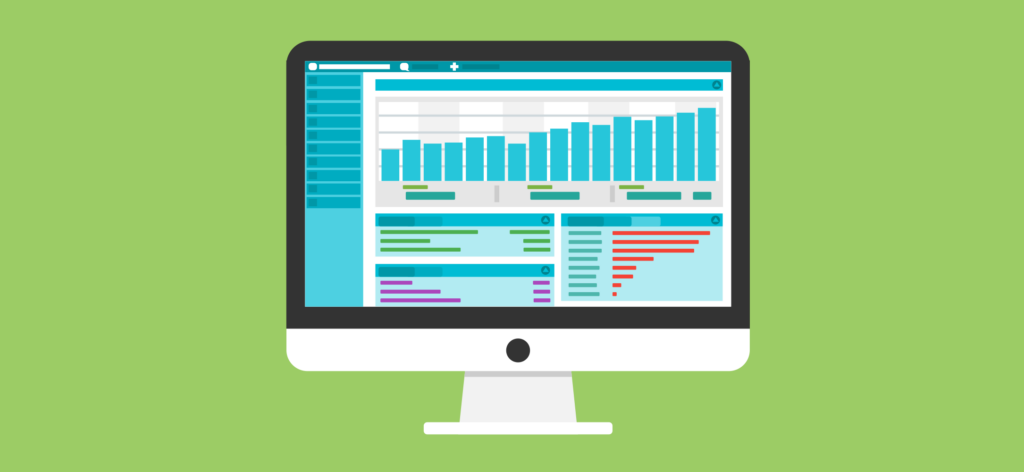A customer data platform (CDP) brings together siloed data to provide deep customer insights and connect the customer journey. While this can optimize the personalization and timing of your customer interactions, how can you quantify the added value that a CDP brings to marketing, and throughout your business?
Let’s look at metrics marketers can use to determine the ROI of a customer data platform and see its impact on your business.
Metrics and Focus Areas for Measuring the ROI of a CDP
1. Improved Ad Spend
Meeting your advertising campaign goals, whether they’re focused on awareness, lead generation, or sales, with the least amount of ad spend necessary is the primary objective of every ad campaign. Narrowing your campaign audience to only those who are ready to purchase can lower your ad spend and improve the ROI of your campaign.
Using a CDP, you can narrow your audience by suppressing contacts gained through one channel from new ad campaigns on a different channel. Comparing ad performance data, such as average cost-per-click can let you know if insights provided by your customer data platform is making a difference in improving your ad spend.
2. Increased Conversion Rates
Conversion rate is defined by the total number of conversions (e.g., form fills, e-commerce purchases, etc.) divided by the total number of visitors to an offer page. A conversion rate below the current industry average is an indicator that there’s a disconnect between the products or services offered, and the value that potential customers place on them.
A CDP can help your business improve conversion rate by supporting data-driven actions like providing more relevant offers to past customers, or promoting location-specific content when potential customers search for answers online. To gauge whether these activities have the intended effect, measure the change in your conversion rate each quarter to watch for improvements.
3. Increased Customer Loyalty and Retention
Customer loyalty and retention are closely tied to customer satisfaction. In addition to surveys, there are several customer retention metrics a company can measure to determine success with existing customers.
Data within a CDP can provide insights that allow teams to focus marketing efforts on high-value customers, as well as provide the best resources and information to customers you’re at risk of losing. To get a handle on the impact of a CDP in these areas, start with loyalty and retention metrics like the customer retention rate (i.e., total customers at the end of the time period you’re considering, minus the number of new customers acquired, all divided by customers at the start of the time period)
Another helpful metric might be the repeat purchase ratio (i.e., number of return customers divided by the total number of customers). Track these numbers over months or quarters to see how they improve.
4. Reduced Return Rates
While return rates (i.e., the number of items returned divided by the number of items sold in a period) can be closely related to customer satisfaction, they can also be an indicator of whether your marketing efforts are targeting the right audience to begin with.
Shopify shared that over 70% of returns are made for preference-based reasons like size, fit, or style. With customer profile data in a CDP, you’re able to more accurately target the right preferences to fit what your business offers. Check the return rate periodically after implementing a CDP to gauge the impact of more accurate targeting.
5. Increased Customer Lifetime Value
As a marketer, customer lifetime value (CLV) is a metric you’re likely familiar with. While calculating CLV is a bit more complex than some of the other calculations, the resulting number gives you a clear picture of what the business can expect to earn from different customer segments.
Since there are quite a few ways that a CDP can impact CLV, like improved personalization, marketing segmentation, and increases in upsell/cross-sell opportunitiesr, keep track of how your CLV changes as you implement new strategies supported by insights delivered by your CDP.
6. Higher Customer Satisfaction
Not only do existing customers offer an easier revenue path than new ones, they can also recommend your offerings to their peers and become a brand advocate. Customer satisfaction should be high on the list of business priorities for any business looking to market to repeat customers.
A customer data platform brings all customer interactions into one centralized location, making it easier for customer service professionals to help customers solve issues and improve experiences by providing contextual insights about how a customer has interacted with the brand, and what they’re expecting from a customer service interaction. Conducting customer satisfaction surveys at an optimal time, such as after a sale or after a customer service interaction, can give you reliable data on customer satisfaction.
7. Optimized Personalization Campaigns
Whether it’s marketing content, a call with a salesperson, or a support chatbot, most customers expect their experience to be personalized based on their needs and their previous interactions with the company.
With a clean, properly-formatted record of customer data, marketers can use artificial intelligence (AI) to identify the next-best action to take to connect with customers, like showing them a highly contextual piece of content, or sending them a personalized email based on the interests they’ve expressed.
To gauge the success of optimized personalization from your CDP, you can consider looking at several different metrics across your marketing operations; like email open rates, click-through rates, engagement rates, and changes in status, like prospects becoming marketing qualified leads.
8. Increased Visibility into Omnichannel Campaigns
Traditionally, marketers use several tools and channels to support customers throughout the customer journey, from social media, to email, long-form content, and more. While a CDP doesn’t replace all of the technology needed for these channels, it can support the customer journey by orchestrating and automating the right next step in omnichannel outreach.
Measuring the success of omnichannel campaigns can be more challenging than some of the other metrics discussed in this post. The metrics that you’re already measuring for each channel like social, email, and your website will be important to gauge. However, more comprehensive metrics for marketing ROI can also give a holistic picture of the success of various marketing channels.
9. Better Demand and Campaign Planning with Predictive Analytics
Planning effective marketing campaigns relies on accurate historical data and the ability to use that data to forecast future trends. While this has historically been the work of analysts, AI and customer data platforms are making it easier to automate predictive analytics and plan future initiatives that can meet upcoming demand.
While improved planning for demand and campaigns isn’t an exact measurement, it is a business benefit that starts with marketing. Using the other marketing metrics outlined, particularly marketing ROI and customer satisfaction-focused metrics, can help indicate the success of planning. Checking in with marketing program leaders to understand performance toward campaign-level goals can also provide a health check for the success of planning.
Seeing Business Value in a Customer Data Platform
Being able to quantify the ROI of a customer data platform can help you justify the investment and help determine if the CDP is providing true value to your business. Implementing a CDP should show clear improvements across key marketing and business metrics that your team can track and share with the larger organization. Determining ROI through the metrics that matter most will help you ensure that you provide your customers with an optimized and personalized journey.



